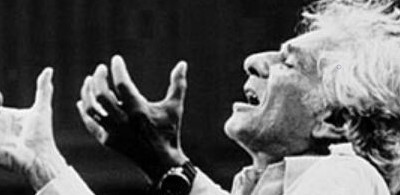This is not art. This is art. Not Sure.
Give me a canvas covered in used bubblegum…
…I’ll give you $500,000 for it.
I was exasperated by a recent “poll” that maligns realism in art. If you have any doubts that every single facet of American life is today being weaponized for political purposes—even the enjoyment of art, then the following should open your eyes. The alternative title for this essay could have been, Data For Entropy.
In September of 2019, pollsters conducted a survey of 1,100 individuals who were asked if they thought a particular image was a legitimate work of art. The details of the scribble were not revealed to those being polled, but the picture bore a striking resemblance to a child’s crayon drawing. The question was simple, “Is this image art?” Respondents were given the option of checking one of the following boxes: “This is not art” “This is art” or “Not sure.” Of those polled, 46 percent said it was art, 38 percent said it was not art, 12 percent were unsure.
The cagey pollsters had intentionally used a crayon drawing titled “Coffee Thyme” created by the celebrated abstract artist Sam Gilliam in 1980. I believe the pollsters were confident that liberals would call the scribble “art,” while conservatives would not—that was the whole point of the “poll.” But the survey not only revealed the pollsters bias towards non-objective abstract art, it revealed an ideological bias as well.
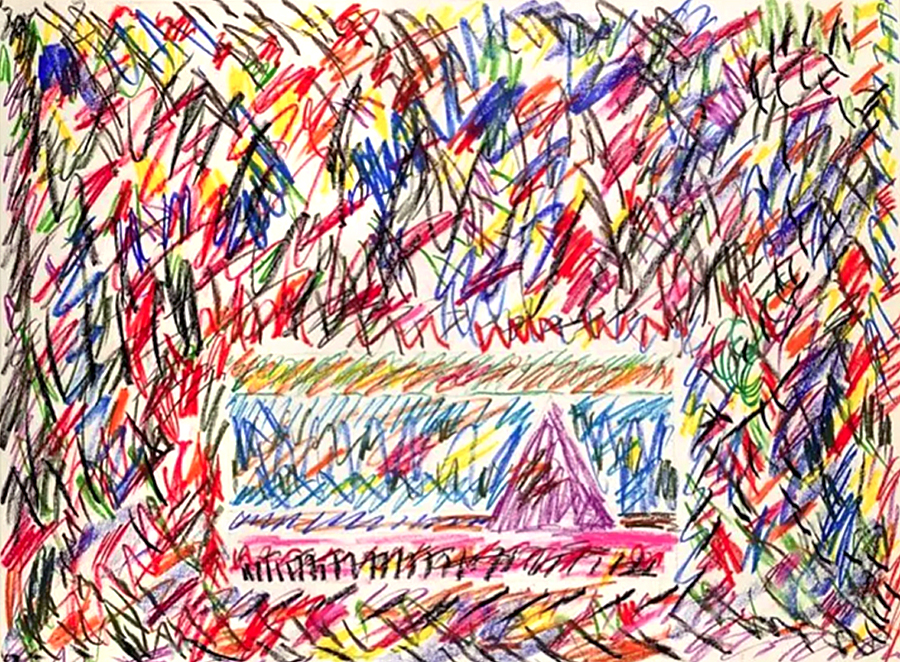
Wouldn’t you know it, from the survey results the pollsters made some wild extrapolations. They concluded that those who saw the doodle as a legitimate artwork disapproved of President Trump, while those who said the scrawl was not a genuine work of art were supporters of President Trump. In other words the pollsters were saying, if you appreciate abstract art you are enlightened, if not, then you are an ignorant deplorable.
The poll was a collaborative project conducted by the groups Data For Progress and YouGov Blue; but what are these organizations all about and what exactly do they espouse? The poll results were immediately, but not surprisingly, published by the art publications Artnet News, and Hyperallergic, as well as the “progressive” website Vox.
The Data For Progress website states that its goal “is to show how a progressive agenda can win nationwide.” It goes on to say that “a new generation of progressives is rising. A generation not afraid to fight for what we believe in—Medicare for all, a Green Job Guarantee, Abolishing ICE.” The website also presents position papers from Democratic Party Presidential hopefuls Elizabeth Warren, Bernie Sanders, Kamala Harris, Cory Booker, and other democrats like California State Senator Kevin de León and “Squad” member Congresswoman Ayanna Pressley of Massachusetts. However, not a single position paper has anything to do with the subject of art or aesthetics. Moreover, there is no mention of cultural matters on the entire Data For Progress website.
Data For Progress does mention that it distributes “our research over the internet because data can only help interpret the world. The point is to change it.” An interesting plagiarism—considering the original phrase was written in 1845 by a young Karl Marx, who wrote: “Philosophers have interpreted the world in various ways, the point however is to change it.”
YouGov Blue is a division of YouGov, which, according to their website, is “exclusively serving progressive and Democratic clients.” The current director of YouGov Blue is Alissa Stollwerk, who possesses “over a decade of experience in Democratic politics” and worked with the Hillary for America campaign.
You may be asking, “what does any of this have to do with art?” Well dear reader, it has nothing at all to do with art… but it has everything to do with deep manipulation and propaganda.
Because of the crooked Data For Progress/YouGov Blue poll, “left” intellectuals have coined the phrase “Coffee Thyme Gap” to describe the alleged philistinism of Trump supporters when it comes to art; comparing it to the supposed “College Degree Gap” of Trump supporters. The Coffee Thyme Gap was concocted for effete art snobs, nonetheless, the College Degree Gap idea peddled by liberals is an especially reactionary anti-working class sentiment. It implies that people who do not attend universities cannot possibly understand the intricacies of politics or art, let alone make significant cultural or political contributions to society. It is a profoundly elitist and undemocratic viewpoint.
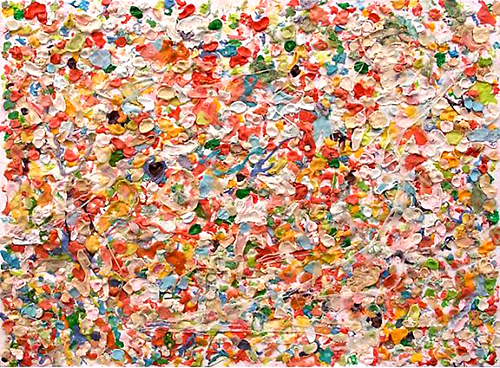
It is laughable that Artnet News and Hyperallergic uncritically published the skewed poll alleging liberals appreciate contemporary art while conservatives do not.
Why, it was just a few years ago, 2017 to be exact, that both art publications were attacking First Daughter Ivanka Trump and her husband Jared Kushner for collecting $25 million in contemporary art. The couple have been acquiring the chic baubles the postmodern crowd endlessly gush over in their cliquish art magazines and contemporary art biennales!
When writing about Ivanka Trump’s Instagram account, where she has pictured artworks in her collection, Hyperallergic put it this way: “It seems likely that little to no part of those millions of dollars arrive from figurative paintings: Ivanka’s feed exemplifies her and Kushner’s affinity for the abstract, the minimal, and the blue chip.”
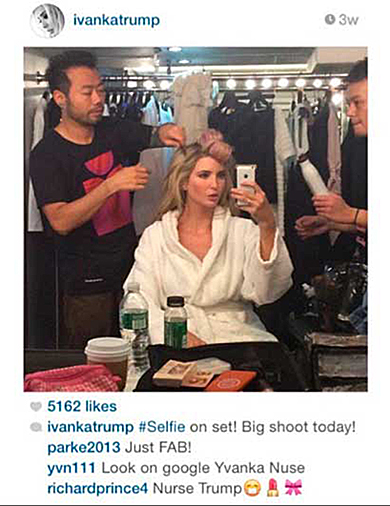
Ivanka Trump’s contemporary art collection could fill a small museum. Her collection includes a “Relax/Outline” painting by David Ostrowski, stencil text by Christopher Wool, a “bullet hole” silkscreen print by Nate Lowman, and an Ivanka Trump Instagram selfie sold to Ivanka by artist Richard Prince for $36,000.
Prince is largely reviled for his plagiarism, yet he remains a wildly popular art star with postmoderns—and he’s filthy rich to boot. One of his scams was stealing the photographs from celebrity Instagram accounts (like Ivanka Trump’s), adding his own comments and signature, printing the images on large canvases, and selling the prints for exorbitant amounts of money. I am also amused that Ivanka Trump purchased a Dan Colen painting made of chewing gum—Colen’s cockamamy gum canvases have sold for over $500,000.
Speaking truthfully I think Ivanka has abysmal taste in art, she listens too much to wealthy art dealers and art investment brokers. I realize that these days it is heresy to say so, but, as I see it, a canvas covered with used bubble gum is not a painting. Apparently the “Make America Great Again” philosophy does not apply to art. Which brings me to the core issue of my essay—best explained by a debate that occurred at New York’s Museum of Modern Art (MoMA ) seventy years ago.
The debate took place at Art Education 1949: Focus for World Unity, a symposium organized by MoMA—the debate specifically occurring during The Artist’s Point of View lecture. Having ended in 1945, World War II was fresh in everyone’s mind; abstract art was gaining acceptance in established art circles, and artists and the art loving public were speculating whether abstraction or realism represented the future of art. At the symposium abstract artist Robert Motherwell and realist painter Ben Shahn made their case.
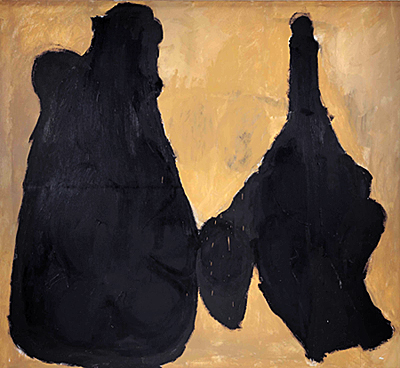
Motherwell argued that by avoiding politics and the depiction of reality, and instead focusing on brushstrokes, shapes, and colors, abstract art offered the virtues of spirituality and purity to viewers; he disparaged Shahn’s politically charged realist paintings and prints as propaganda. Ben Shahn countered in part with the following words: “Trying to get away from content seems to me a little wistful—somewhat like Icarus trying to shed the earth. And at our particular point in history, it’s more than wistful; it appears almost to consort with those forces which would repudiate man and his culture as ultimate values.”

From our point in history we know who won the debate—a tectonic shift took place in the art world; abstract art came to totally dominate the American and international art scene. From the 1940s to the late 1950s—abstract art almost completely buried realist painting. Artists who practiced realism were considered old-fashioned, and galleries and museums largely shunned them for the avant-garde abstractionists. But how did abstract art come to monopolize the art world and eclipse figurative realism?
Interestingly enough, during the Cold War the U.S. Central Intelligence Agency secretively promoted abstract art as a weapon against the Soviet Union. Muralist Eva Cockcroft (1937-1999), who painted social themes on the walls of Los Angeles, was also an art historian and writer. In 1974 she wrote Abstract Expressionism, Weapon of the Cold War, an important essay published in ArtForum magazine that same year. Cockcroft wrote: “Links between cultural cold war politics and the sources of Abstract Expressionism are by no means coincidental, or unnoticeable. They were consciously forged at the time by some of the most influential figures controlling museum policies and advocating enlightened cold war tactics designed to woo European intellectuals.”
Starting in 1995 British journalist and historian Frances Stonor Saunders wrote about the subject, first in a ’95 essay titled Modern art was a CIA weapon, and later in her highly recommended 2001 book: The Cultural Cold War: The CIA and the World of Arts and Letters.
In the book Saunders detailed how the CIA planted positive articles about abstract art in magazines and newspapers; clandestinely organized exhibits of abstract art for national and international audiences, and surreptitiously funded abstract artists—along with the museums and galleries that featured them. The spy agency utilized New York’s Museum of Modern Art as a platform for abstract art; its director, Nelson Rockefeller, was a main proponent of abstraction—he called it “free enterprise painting.”
Enter “color field” painter Sam Gilliam. The end of the ’50s witnessed abstract painting being challenged by color field painting—it was the next big advancement in art, or so we were told by art world gatekeepers. Art critic Clement Greenberg praised it as “post-painterly abstraction,” as in, who needs painting? Color field entirely did away with the “gesturalism” of abstract art and instead filled canvases with fields of pure, solid color and nothing more. It’s the “tension” between the colors that excites the aficionados of color field, who say it is more “cerebral” than mere abstract painting.
Of course, abstraction and color field were superseded by pop, minimalism, conceptualism, appropriation, street art, and the rest of the postmodernist alphabet soup (just look at Ivanka Trump’s art collection). Figurative realism collapsed, and today’s art snobs have relegated it to the “unfashionable” world of Thomas Kinkade (no, I am not a fan). Figuration struggles to reclaim its former stature in the art world, but it mostly strives as an underground movement.
I am not arguing that the CIA single-handedly, and intentionally, blotted out the school of figurative realism; however, the agency did play an undeniable role in its demise. The main target of the CIA was the so-called “Socialist Realism” of the Stalinist Soviet Union, but it was America’s tradition of figurative social realism that became collateral damage. It was not by chance that abstract art developed alongside the political machinations of Joe McCarthy.
The American realist painter Edward Biberman (1904-1986), put it this way: “My speculation as to why this particular point of view, which avoids subject matter, coincided almost exactly with the Cold War is something which one cannot prove. The painters of the abstract expressionist and action schools did not have to wrestle directly with contemporary social issues.” Mind you, Biberman had no idea the CIA was pushing abstract art—the writings of Eva Cockcroft and Frances Stonor Saunders came years after Biberman’s suspicions.
There is a new McCarthyism afoot, twisted and distorted, it is now a child of the left; witness the successful attempt of progressives in censoring the mural The Life of George Washington, painted by communist artist Victor Arnautoff in 1936. The Data For Progress/YouGov Blue research is simply McCarthyism turned on its head.
Art world gatekeepers say we are living with a new plurality in art, where all styles form a rich aesthetic environment for the public to enjoy; but in my view serious figurative realism is still excluded. The art world is conflicted, moving away from its former preference for non-political art, to embracing art that promotes “social justice.” The conundrum is that the dominant school of postmodern art—which includes performance, conceptualism, etc., does not speak with a clear, concise, voice to the public at large. In essence, it has no effective language to communicate with the broader society. It is impossible to convey messages of social import with varnished clumps of elephant dung or animals pickled in vats of formaldehyde… at least in my book.

Robert Hughes, one of the very few art critics I ever paid any attention to, wrote about the abstract painter Mark Rothko in his book, American Visions: The Epic History of Art in America. He lauded the paintings of Rothko for their emotive power, but chastised Rothko because his “work could not, in the end, support the weight of meaning he wanted it to have.”
In my not so humble opinion, that is the stumbling block for all non-objective art.
As an artist deeply involved in figurative realist art I have studied the achievements of realist painters throughout the ages, and I have traveled the world to see those treasures. With realistic drawings, prints, and paintings I endeavor to present the human condition. For me, realism is the incomparable technique when it comes to telling stories, which is the type of art I practice.
Like the ancient Ouroboros symbol of a serpent eating itself tail first, the liberal art press swallows whole and disseminates this new-sprung McCarthyite poison: “Abstract art is enlightenment, realist art is for ignorant deplorables.”



